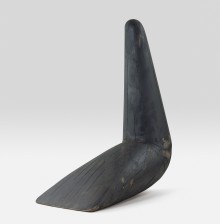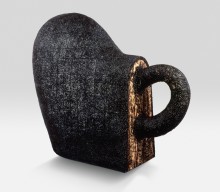Martin Puryear
Lever (#4) 1989

© Martin Puryear. Reproduction of this image, including downloading, is prohibited.
“Interior space is often the secret space of sculpture, certainly in traditional sculpture, which is monolithic…I think of interior space as a world with enormous conceptual potential, an important aspect of sculpture.”*
-Martin Puryear
*Richard J. Powell, “A Conversation with Martin Puryear,” in John Elderfield, Martin Puryear (The Museum of Modern Art, 2007), 108





